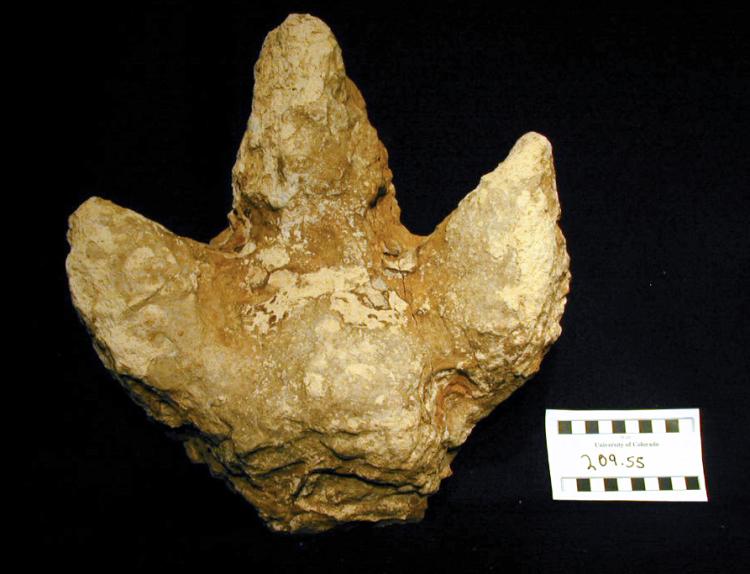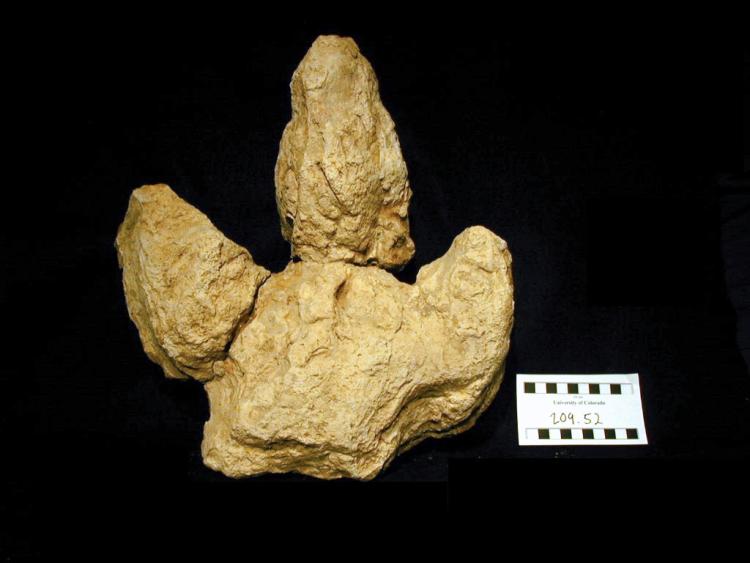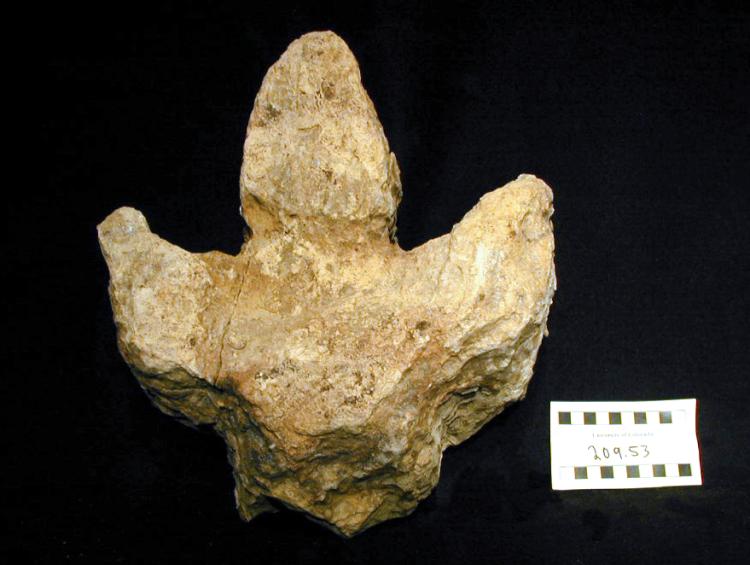


Little did we know what treasures were buried when the John Martin Reservoir in Bent County, southeastern Colorado, was constructed in 1948 for flood and water resource management of the Arkansas River. When full, the reservoir is the largest body of water in the region. In 2004-2005 , the region experienced a drought that nearly drained the reservoir entirely. Due to the drought, nearly 300 dinosaur and other vertebrate tracks were discovered in dry portions of the reservoir bed. Most of the tracks are attributed to the ichnogenus Caririchnium, which is thought to have been made by an ornithopod, aka duckbill-type dinosaur. An ichnogenus is a genus that is only known from the trace fossil, such as a track, burrowing, trail, and etc. Caririchnium is characterized by three broad toes and a large heel. Other tracks found include the ichnogenus Magnoavipes, a track possibly made by a theropod or meat-eating dinosaur, numerous crocodile swimming tracks, and the first-ever discovered pterosaur, a flying reptile, tracks from the region.
The John Martin Reservoir tracks are all found in the Pajarito Formation of the Dakota Group, which is Early to Late Cretaceous in age, about 113 to 94 million years old. Rocks of the Dakota Group are a mixture of mudstones, siltstones, and sandstones that were deposited along a coastal shoreline when the interior of the North American continent was covered by a vast ocean known as the Western Interior Seaway. More than a thousand track sites have been found in the rocks of the Dakota Group, giving it the nickname “The Dinosaur Freeway”. The Dinosaur Freeway is an ancient coastal plan that runs Northeast Colorado, near Boulder, to east central New Mexico, near Tucumcari, including the tracks found at the John Martin Reservoir. Most “Dinosaur Freeway” sites have multiple sets of Caririchnium or other types of ornithopod trackways that occur in parallel or subparallel lines. This seems to indicate that the Caririchnium track makers traveled in large social groups rather than as isolated individuals. Several track sites at the John Martin Reservoir show this traveling pattern.
Unlike other “Dinosaur Freeway” sites, like Dinosaur Ridge in Morrison, Colorado where the tracks occur as molds, or depressions on the rock surface, the John Martin Reservoir tracks occur as natural sandstone casts or 3D representations of the tracks. Another unusual feature of the John Martin Reservoir tracks was the way they were found. Usually, natural casts are found on the undersides of overhanging rocks. In this case, the natural casts were “pedestalled”, where the softer mudstone surrounding the track weathered away leaving the harder, thicker sandstone natural cast sitting on the surface of the ground in the positions they were made. Thus, continued research into tracks and trackways is essential to help us understand past ecosystems.
Kukihara, R., and Lockley, M.G., 2012, Fossil footprints from the Dakota group (Cretaceous) John Martin Reservoir, Bent County, Colorado: New insights into the paleoecology of the Dinosaur Freeway: Cretaceous Research, v. 33, p. 165-182, doi: 10.1016/j.cretres.2011.09.013.
